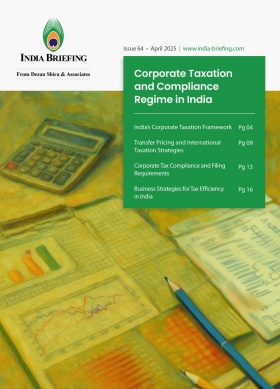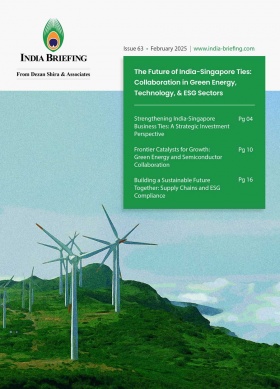Countdown to the End of Trump’s Tariff Pause: Where Does India Stand Now?
India-US move closer to a potential interim trade agreement, as negotiations in Washington, D.C., have intensified. The discussions follow months of diplomatic engagement, triggered by Trump’s sweeping tariff announcement on April 2, 2025.
A formal trade agreement between the two countries has been under deliberation for several years; however, the momentum has gained a notable pace since February 2025.
We bring you the latest developments on India-US tariff negotiations.
The United States (US) has extended tariffs deadline by three weeks, with India’s key industries are bracing for potential disruptions in the global trade landscape. Since the announcement of baseline tariff and country-specific reciprocal tariffs on April 2, 2025, India has held multiple rounds of discussions with the White House for a favorable trade deal.
On April 9, 2025, Trump announced a 90-day pause on the reciprocal tariffs to allow room for negotiations. This was further extended through an executive order issued on July 7, setting the new tariff enforcement date as August 1, 2025.
Following Trump’s return to the White House on January 20, 2025, India, along with other major global economies, anticipated major shifts in bilateral trade dynamics. In an effort to maintain strong relations between India and the US, Prime Minister Narendra Modi visited Washington, D.C., in February 2025. The aim was to ensure strategic partnership and secure favorable trade outcomes.
Trump announces 50 percent tariff on copper; pharma duties could follow by 2026
On July 8, 2025, Trump unveiled new plans to impose a 50 percent tariff on copper imports, while signaling that steeper duties—potentially as high as 200 percent—could be levied on pharmaceutical imports by the US within the next 12 to 18 months.
Trump has clarified that the pharmaceutical sector would be granted a grace period— “about a year, year and a half”—to relocate operations to the US before facing these elevated tariffs.
Earlier in 2025, the White House imposed a blanket 10 percent tariff on nearly all US trading partners, with additional targeted duties on steel, aluminum, and automobiles. The US administration is also looking into imports of lumber, semiconductors, and critical minerals, raising the prospect of further tariff hikes.
In a post on Truth Social earlier on July 7, Trump confirmed that the new tariff schedule will take effect from August 1, 2025, with no extensions granted. “All money will be due and payable starting August 1, 2025—no change, no exceptions,” he wrote.
Implications for India: Copper impact limited, pharma risks high
The latest announcement holds major significance for India, as the US is both a top market for Indian pharmaceuticals and a key destination for copper exports. In FY 2024–25, India exported US$2.32 billion worth of copper and copper products.
|
India’s Copper and Copper Products Exports to Top 10 Regions in FY 2024-25 |
|
|
Countries/region |
Value in US$ million |
|
Saudi Arabia |
555 |
|
US |
399 |
|
China |
368 |
|
UAE |
114 |
|
Malaysia |
87 |
|
South Korea |
79 |
|
Germany |
67 |
|
Canada |
52 |
|
Nepal |
41 |
|
UK |
36 |
Source: Department of Commerce, Ministry of Commerce and Industry, GoI
The US ranks as India’s second largest copper export market—after Saudi Arabia—analysts suggest that any dip in demand could be offset by rising domestic consumption, given copper’s essential role in energy, infrastructure, and manufacturing.
However, the pharmaceutical sector is far more vulnerable. In FY 2024-25, India’s pharmaceuticals exports valued at US$30.46 billion globally, indicating an increase of 9.39 percent increase over previous fiscal year.
|
India’s Pharmaceuticals Products Exports to Top 10 Regions in FY 2024-25 |
|
|
Countries/region |
Value in US$ million |
|
US |
10,515 |
|
UK |
914 |
|
Brazil |
778 |
|
France |
720 |
|
South Africa |
678 |
|
Canada |
620 |
|
Netherland |
617 |
|
Germany |
598 |
|
Russia |
577 |
|
Nigeria |
535 |
Source: Department of Commerce, Ministry of Commerce and Industry, GoI
The US is India’s largest overseas pharma market, accounting for US$10.5 billion in exports in FY 2024-25. A steep 200 percent tariff by Trump could severely disrupt demand, particularly for India’s generic drug manufacturers, who supply a significant share of affordable medicines to the US.
ALSO READ: US Drug Price Cuts May Hit Indian Pharma
Trump administration issues formal tariff notices to 14 countries
White House has begun notifying countries of specific tariff rates on exports to the US starting July 7, 2025.
On July 3, Trump stated logistical challenges of negotiating with over 170 countries. To streamline the process, the administration will begin sending formal notices in batches—approximately 10 countries at a time—outlining tariff rates expected to range between 20 percent and 30 percent.
“With more than 170 countries, how many deals can you realistically make?” Trump said. “It’s far more complicated than people think.”
US Treasury Secretary Scott Bessent has reportedly told Bloomberg Television that roughly 100 countries are expected to receive a flat reciprocal tariff of 10 percent. He also forecast a surge in last-minute deals ahead of the July 9 deadline, after which tariffs are expected to rise sharply for countries without agreements in place.
India excluded from latest US tariff list as trade talks progress
On July 7, 2025, Trump issued formal tariff notices to 14 countries, including Japan, South Korea, Bangladesh, Myanmar, Laos, Thailand, Cambodia, Malaysia, Serbia, Tunisia, and South Africa. The notifications outlined Washington’s plan to impose new import tariffs on these nations beginning August 1, 2025.
India was notably excluded from this list, with President Trump indicating that the US is close to finalizing a trade agreement with New Delhi.
As per several reports, India has submitted its proposals for an interim trade deal, but further progress hinges on the US administration’s flexibility in addressing key Indian concerns. Speaking at the White House on July 7, Trump reiterated that discussions with India are advancing toward a finalization.
The latest extension of the tariff pause gives Indian negotiators additional time to secure terms that protect domestic interests while expanding market access for Indian exports. India continues to emphasize the need for safeguards in sensitive sectors such as agriculture and dairy, alongside seeking better access for labor-intensive goods.
Inside the India–US tariff talks: Key negotiators and recent developments
Here are the key players leading the negotiations between India and the US.
India’s negotiation team
- India’s Prime Minister Narendra Modi
- Union Minister of Commerce and Industry Piyush Goyal
- Rajesh Agrawal, Special Secretary, Ministry of Commerce and Industry – (Chief negotiator).
Rajesh Agrawal, a senior bureaucrat from the 1993 IAS batch (Manipur cadre), is leading India’s negotiation efforts. As the Commerce Ministry’s Special Secretary and incoming Commerce Secretary, Agrawal has previously overseen the review of India’s Free Trade Agreement (FTA) with ASEAN and led trade negotiations with Australia and Peru. He also supervises APEDA, which handles the promotion of agricultural and processed food exports in India.
The US negotiation team
- US President Donald J. Trump
- US Commerce Secretary Howard Lutnick
- Jamieson Greer, US Trade Representative
- Brendan Lynch, Assistant USTR for South and Central Asia – (Chief negotiator).
Brendan Lynch, the US team’s lead negotiator, has long experience shaping trade policy in South Asia. Formerly Deputy Assistant USTR and Director for India, Lynch now oversees trade relations across 15 countries and coordinates bilateral efforts through the US–India trade policy forum and regional Trade and Investment Framework Agreements (TIFAs).
Status of the India-US trade talks
As per several reports, India’s chief negotiator for India-US trade deal, Rajesh Agrawal, has returned to New Delhi after a week of intense discussions with the US Trade Representative’s team. The Indian delegation had been in Washington since June 27, following earlier in-person meetings held between June 5–10, 2025.
While Indian officials remain optimistic about striking a deal in the coming weeks, New Delhi has adopted a firmer stance on key issues—particularly around agriculture and dairy. One of the major sticking points has been genetically modified (GM) agricultural imports. Although reports indicate that India may allow certain GM products for animal feed, it continues to resist broader concessions in its sensitive farm and dairy sectors.
US-Vietnam trade deal sends warning signals to Indian exporters: GTRI
The latest trade agreement between the US and Vietnam, announced on July 2, 2025, is expected to have wide-ranging implications across Asian export markets. Initially, in early April, Trump introduced a 46 percent tariff on Vietnamese goods as part of a broader reciprocal tariff policy targeting multiple countries. However, this rate was later reduced to 10 percent to allow room for negotiations. For now, Indian exporters are urged to proceed cautiously, according to a report by the Global Trade Research Initiative (GTRI).
ALSO READ: GTRI Cautions India on Trade Shortcuts Amid Tariff Tensions
Under the deal, Trump has introduced a uniform 20 percent tariff on all Vietnamese exports to the US. This move threatens to disrupt Vietnam’s US$135 billion export industry and may effectively undo over two decades of progressive trade liberalization.
The current agreement replaces the 2000 Bilateral Trade Agreement (BTA) between the US and Vietnam, which had granted Vietnamese products preferential tariffs ranging between two percent and 10 percent.
| Top 10 Importing Countries/Regions to the US in 2024 | |||
|
Importers (country/region) |
US’s imports in 2024 (US$ thousand) |
Trade balance 2024 (US$ thousand) |
Share in the US imports (%) |
|
Mexico |
509,986,324 |
-175,944,965 |
15.2 |
|
China |
462,638,752 |
-319,093,012 |
13.8 |
|
Canada |
422,170,029 |
-73,666,613 |
12.6 |
|
Germany |
163,546,205 |
-87,933,302 |
4.9 |
|
Japan |
152,066,016 |
-72,325,170 |
4.5 |
|
Vietnam |
142,475,987 |
-129,377,832 |
4.2 |
|
South Korea |
135,461,351 |
-69,919,561 |
4 |
|
Taipei, Chinese |
118,730,455 |
-76,393,594 |
3.5 |
|
Ireland |
103,755,092 |
-87,217,061 |
3.1 |
|
India |
91,234,523 |
-49,481,855 |
2.7 |
Source: ITC Trade Map
The GTRI noted that Indian exporters, especially those viewing Vietnam as both a competitor and a partner in regional value chains, must consider the strategic and cautionary lessons from this development.
US-Vietnam great deal of cooperation
Trump unveiled the “Great Deal of Cooperation” on his Truth Social platform, claiming that Vietnam would now provide the US with “total access” to its markets. In exchange, Vietnamese exports to the US will face a 20 percent duty, reduced from an initially proposed 46 percent, but still significantly higher than the rates under the earlier BTA. While Hanoi has confirmed an agreement on reciprocal tariff measures, details on the final terms remain undisclosed.
According to the Agence France-Presse (AFP), the new agreement also imposes a steep 40 percent tariff on products routed through Vietnam but originally manufactured in third countries like China. This clause is seen as a measure to counter transshipment practices aimed at bypassing US trade barriers. However, trade analysts have flagged potential violations of World Trade Organization (WTO) rules, as such routing does not alter the origin status of goods.
For India, the timing of this development is particularly significant. As trade negotiations with the US near completion, the GTRI has advised Indian negotiators to take note of Vietnam’s experience, especially the dangers of abrupt tariff revisions, ambiguous rules of origin, and the risks of inflexible duty structures.
With the US redefining its trade priorities in the Asia-Pacific region, Indian policymakers and exporters are being encouraged to remain vigilant and responsive. The GTRI made a note that the vulnerabilities exposed by the Vietnam deal could help India steer clear of similar setbacks in its own trade strategy.
India-US trade negotiations
According to the latest media reports, India and the US are nearing the conclusion of a BTA. As of July 3, 2025, trade negotiations are actively underway in Washington, D.C., with media speculation that a “mini-trade deal” could be finalized in the coming days. Both countries’ trade teams are reportedly in the final phase of discussions.
While neither government has officially confirmed the details of the BTA negotiations, multiple reports indicate that the US is pushing for broader market access to India’s agricultural and dairy sectors. However, given that agriculture remains a cornerstone of the Indian economy—employing over 50 million people as of 2025—India is expected to approach this demand with caution.
Dr. Ajay Srivastava, founder of the GTRI and a former officer of the Indian Trade Service, has advised against any abrupt tariff reductions in favor of the US. He emphasized that India must evaluate the full spectrum of implications that such changes could have on its critical sectors before finalizing any trade commitments.
India’s export size and trade relations with the US
As of 2024, India ranks 18th among the world’s largest export economies. The country has accelerated its manufacturing activities, emphasizing the production of electronic components, defense equipment, and pharmaceutical products.
|
Exporting country/region |
Rank |
Exports in 2024 (Value in US$ thousand) |
Annual growth between 2020-2024 |
Export growth in FY 2023-24 |
Share in world exports |
|
India |
18 |
441,700,612 |
11% |
2% |
1.8% |
Source: ITC Trade Map
While India’s global export share remains modest, it is growing steadily. A key contributor to this momentum is India’s trade relationship with the US.
As of FY 2024-25, the US continues to be India’s top export market, accounting for 18.3 percent of India’s total exports in 2024. Bilateral trade with the US is also strongly favorable for India, with a trade surplus exceeding US$37.7 billion.
| India’s Top 10 Export Destinations in 2024 | |||
|
Importers (country/region) |
India’s exports in 2024 (US$ thousand) |
Trade balance 2024 (US$ thousand) |
Share in India’s exports (%) |
|
US |
80,782,015 |
37,707,314 |
18.3 |
|
UAE |
37,757,497 |
-22,393,443 |
8.5 |
|
Netherlands |
24,613,764 |
19,796,244 |
5.6 |
|
Singapore |
15,858,702 |
-4,388,045 |
3.6 |
|
China |
15,137,534 |
-93,838,852 |
3.4 |
|
UK |
14,292,792 |
5,889,309 |
3.2 |
|
Saudi Arabia |
12,276,563 |
-17,585,718 |
2.8 |
|
Bangladesh |
11,490,939 |
9,563,515 |
2.6 |
|
Germany |
10,409,827 |
-6,769,281 |
2.4 |
|
Italy |
8,465,412 |
2,719,293 |
1.9 |
Source: ITC Trade Map
The data highlight that India maintains a near-even mix of trade surpluses and deficits among its top 10 trading partners. However, the trade relationship with the US is notably strong—both in terms of export volume and surplus—reinforcing the strategic importance of continued trade engagement.
The US, as the world’s largest importer, accounts for nearly 14 percent of global imports. India’s ability to maintain a significant surplus with such a dominant economy not only reflects its export competitiveness but also underscores the need to safeguard and expand this vital trade partnership in any upcoming trade negotiations.
Trump’s tariff imposition and the “global frenzy”
On April 2, 2025, Trump unveiled a comprehensive list of country-wise tariff rates. The tariff blueprint can be divided into two parts:
- A basic 10 percent tariff is applicable to all trading partners of the US, effective April 5, 2025.
- A country-specific reciprocal tariff, effective April 9, 2025. The US imposed a 26 percent reciprocal tariff on India.
A day after the announcement, the US president made the decision to put a temporary halt on the imposition of reciprocal tariffs for 90 days. This has now been extended till August 1, 2025.
The trade pact with Vietnam on July 2 marks only the third such agreement announced so far, following earlier deals with the UK and China. Countries are moving swiftly to finalize trade terms with the US ahead of the July 9 deadline.
Although the Trump administration initially aimed to negotiate simultaneously with numerous trade partners, recent statements from the president and his advisors indicate a shift in strategy. They now plan to prioritize talks with major economies, while smaller countries or those unable to reach agreements may face unilateral tariff impositions.
Conclusion
India stands at a critical juncture in its trade negotiations with Washington. Despite sustained diplomatic outreach and multiple rounds of dialogue, securing a balanced trade agreement remains a complex task, particularly in light of recent developments such as the US–Vietnam deal. With the US States redefining its Asia-Pacific trade strategy and imposing tariffs under its new reciprocal framework, Indian negotiators can draw lessons from Vietnam’s experience. The country must weigh the long-term implications of tariff concessions, protect its sensitive sectors such as agriculture, and ensure clarity on rules of origin.
(This article was originally published on July 3, 2025. It has since been updated on July 9, 2025.)
About Us
India Briefing is one of five regional publications under the Asia Briefing brand. It is supported by Dezan Shira & Associates, a pan-Asia, multi-disciplinary professional services firm that assists foreign investors throughout Asia, including through offices in Delhi, Mumbai, and Bengaluru in India. Dezan Shira & Associates also maintains offices or has alliance partners assisting foreign investors in China, Hong Kong SAR, Vietnam, Indonesia, Singapore, Malaysia, Mongolia, Dubai (UAE), Japan, South Korea, Nepal, The Philippines, Sri Lanka, Thailand, Italy, Germany, Bangladesh, Australia, United States, and United Kingdom and Ireland.
For a complimentary subscription to India Briefing’s content products, please click here. For support with establishing a business in India or for assistance in analyzing and entering markets, please contact the firm at india@dezshira.com or visit our website at www.dezshira.com.
- Previous Article India’s ECMS 2025: Application Window Opens May 1 – Incentives and Eligibility for Manufacturers
- Next Article Tamil Nadu Permits 24×7 Business Operations: What Employers Must Know







